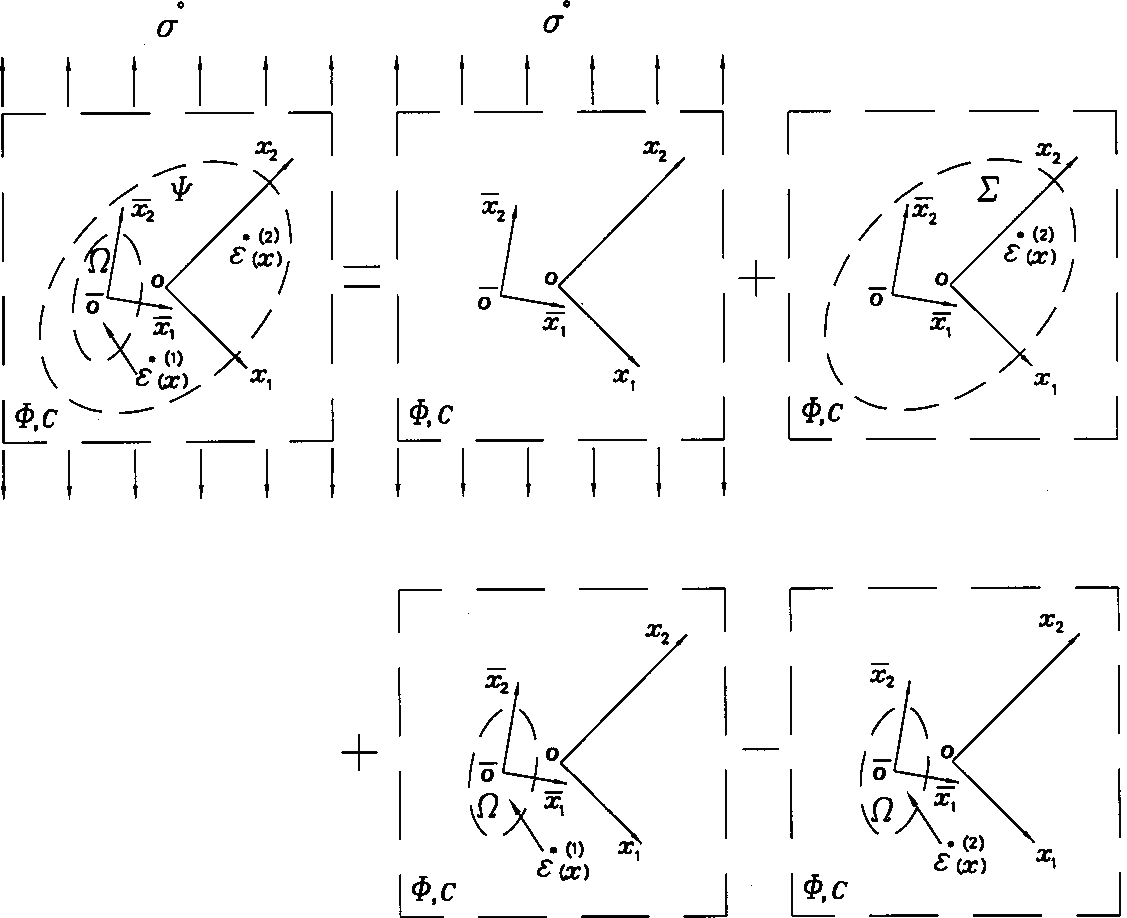Hossein M. Shodja

Consider a double-inhomogeneity system whose microstructural configuration is composed of an ellipsoidal inhomogeneity of arbitrary elastic constants, size, and orientation encapsulated in another ellipsoidal inhomogeneity, which in turn is surrounded by an infinite medium. Each of these three constituents in general possesses elastic constants different from one another. The double-inhomogeneity system under consideration is subjected to far-field strain (stress). Using the equivalent inclusion method (EIM), the double inhomogeneity is replaced by an equivalent double-inclusion (EDI) problem with proper polynomial eigenstrains. The double inclusion is subsequently broken down to single-inclusion problems by means of superposition. The present theory is the first to obtain the actual distribution rather than the averages of the field quantities over the double inhomogeneity using Eshelby’s EIM. The present method is precise and is valid for thin as well as thick layers of coatings, and accommodates eccentric heterogeneity of arbitrary size and orientation. To establish the accuracy and robustness of the present method and for the sake of comparison, results on some of the previously reported problems, which are special cases encompassed by the present theory, will be re-examined. The formulations are easily extended to treat multi-inhomogeneity cases, where an inhomogeneity is surrounded by many layers of coatings. Employing an averaging scheme to the present theory, the average consistency conditions reported by Hori and Nemat-Nasser for the evaluation of average strains and stresses are recovered.

Decomposition of the EDI problem to a domain under uniform far-field stress and three single inclusion problems with proper polynomial eigenstrains
elasticity, elastic constants, stress-strain relations, inclusions, fibre reinforced composites, crystal microstructure, eigenvalues and eigenfunctions